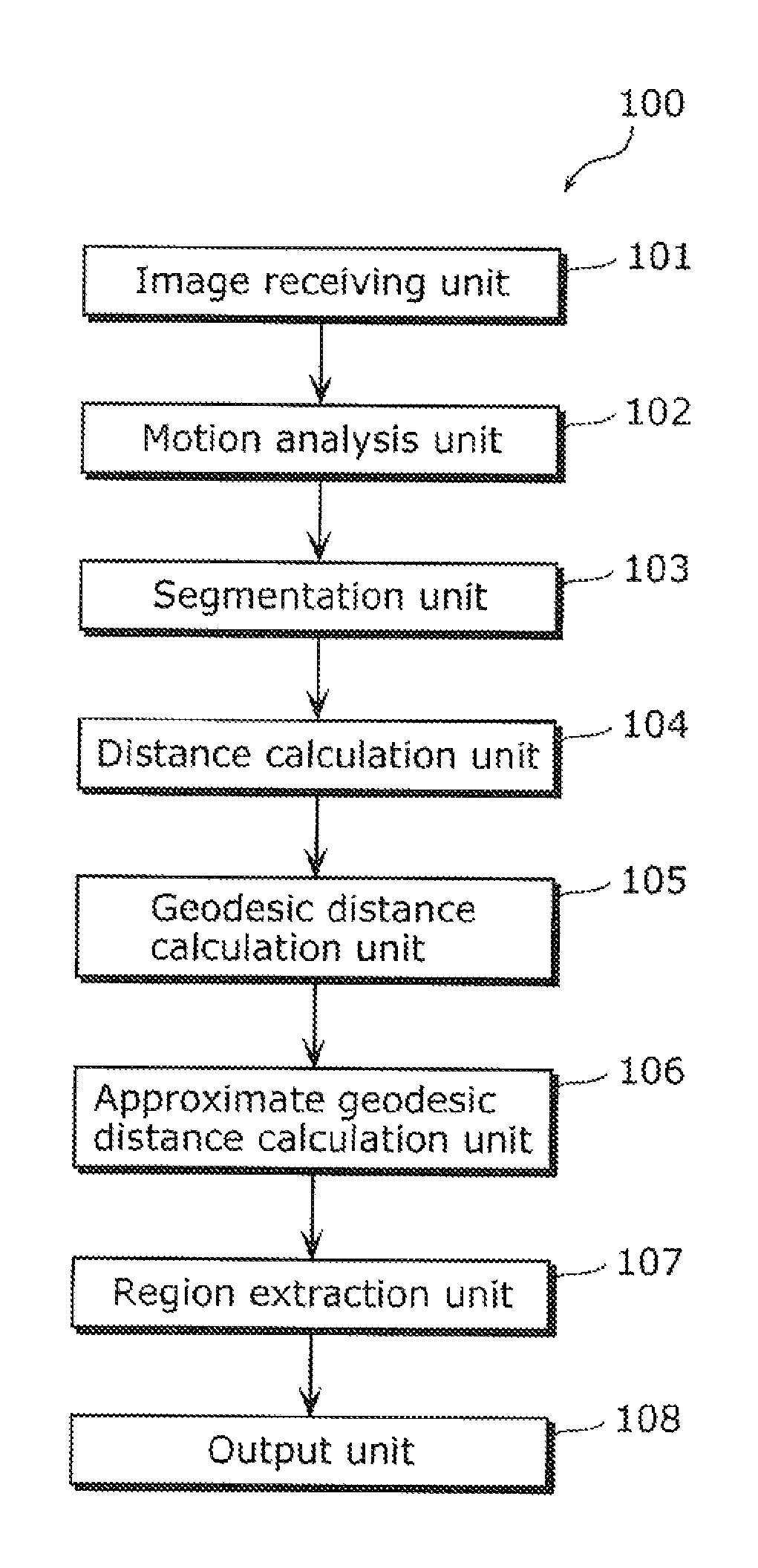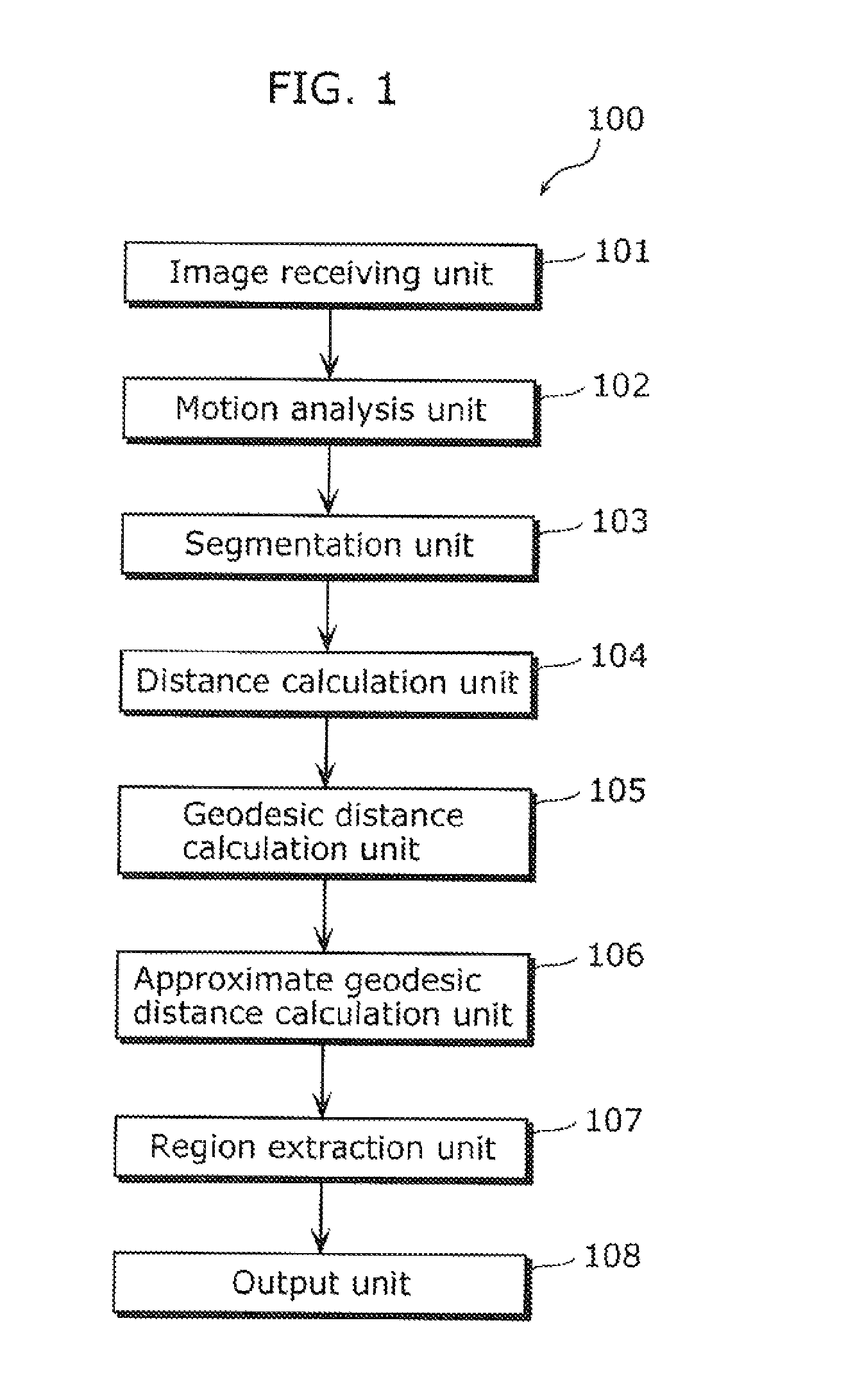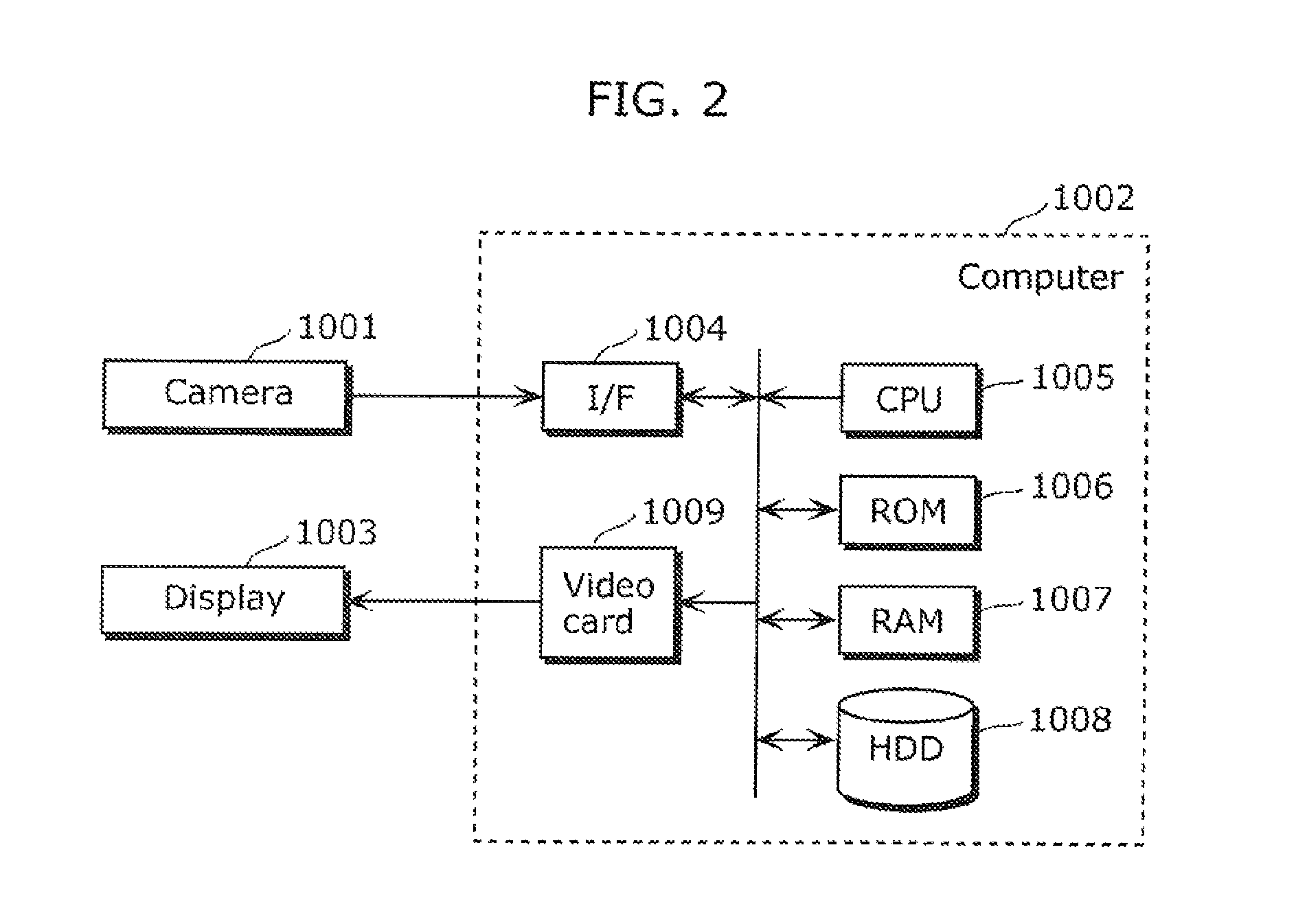Moving object detection apparatus and moving object detection method
a technology for moving objects and detection apparatuses, applied in the field of moving object detection apparatuses and moving object detection methods, can solve the problems of difficult to accurately extract the candidate region, inability to correctly apply, and inability to accurately extract the moving object, etc., and achieve the effect of accurate region extraction at high speed
- Summary
- Abstract
- Description
- Claims
- Application Information
AI Technical Summary
Benefits of technology
Problems solved by technology
Method used
Image
Examples
second embodiment
(Second Embodiment)
[0257]Next, a moving object detection apparatus and a moving object detection method in the second embodiment of the present invention are described.
[0258]The present embodiment describes the moving object detection apparatus having an additional function of estimating motion of the moving object on the basis of the result of the moving object detection and region extraction performed according to the moving object detection method described in the first embodiment.
[0259]FIG. 22 is a diagram showing a configuration of a moving object detection apparatus 100d in the second embodiment. As shown in FIG. 22, the moving object detection apparatus 100d of the second embodiment includes an image receiving unit 101, a motion analysis unit 102, a segmentation unit 103, a distance calculation unit 104, a geodesic distance transformation unit 105, an approximate geodesic distance calculation unit 106, a region extraction unit 107, and an output unit 108c. In addition to thes...
third embodiment
(Third Embodiment)
[0278]Next, a moving object detection apparatus and a moving object detection method in the third embodiment of the present invention are described.
[0279]The present embodiment describes the moving object detection apparatus which develops the moving object detection method described in the first embodiment so as to perform the moving object detection and region extraction using sets of images taken by cameras, respectively.
[0280]FIG. 25 is a diagram showing a configuration of a moving object detection apparatus 100e in the third embodiment. As shown in FIG. 25, the moving object detection apparatus 100e in the present embodiment includes an image receiving unit 101a having a multi-camera image receiving unit 2401, a motion analysis unit 102a, a segmentation unit 103a, a distance calculation unit 104a, a geodesic distance transformation unit 105b, an approximate geodesic distance calculation unit 106b, a region extraction unit 107b, and an output unit 108d. Note th...
fourth embodiment
(Fourth Embodiment)
[0301]Next, a data classification apparatus and a method thereof are described as application examples of a moving object detection apparatus and a method thereof according to the fourth embodiment of the present invention.
[0302]FIG. 29 is a diagram showing a configuration of a data classification apparatus 2800 in the fourth embodiment. As shown in FIG. 29, the data classification apparatus 2800 includes a vector data receiving unit 2801, a segmentation unit 103, a distance calculation unit 104, a geodesic distance transformation unit 105, an approximate geodesic distance calculation unit 106, a data classification unit 2802, and an output unit 2803. In the present embodiment, multidimensional vector data pieces, such as the aforementioned movement trajectories, are received as inputs and classified.
[0303]The vector data receiving unit 2801 is a processing unit which receives vector data. For example, the vector data may be data indicating three-dimensional posit...
PUM
 Login to View More
Login to View More Abstract
Description
Claims
Application Information
 Login to View More
Login to View More - R&D
- Intellectual Property
- Life Sciences
- Materials
- Tech Scout
- Unparalleled Data Quality
- Higher Quality Content
- 60% Fewer Hallucinations
Browse by: Latest US Patents, China's latest patents, Technical Efficacy Thesaurus, Application Domain, Technology Topic, Popular Technical Reports.
© 2025 PatSnap. All rights reserved.Legal|Privacy policy|Modern Slavery Act Transparency Statement|Sitemap|About US| Contact US: help@patsnap.com



